Uber’s uber cool and unconventional marketing strategy in India
How Uber builds its brand without spending heavily on mass media
Uber has been an inspirational brand since the moment it first stepped its foot in India. It already had attached to its name then, a $41bn valuation and one of world’s hottest start-ups tags. A few informed early adopters knew Uber for the name it was globally.
A wise person once said,
“Sex is in the product, not marketing”.
Get your product right and it will sell itself. There is a reason why we have never seen any mass media, traditional ads of the biggest companies that are known to us like Facebook, Twitter, Airbnb, Instagram and others that concentrated on communities, engagement and customer retention. All of them essentially followed a practice, now popularly called” Growth Hacking” which means acquiring more and more engaged users without using traditional marketing techniques.
To know more about “Growth Hacking”, click here
Uber’s marketing strategy in India was never once about large media spends or traditional mass marketing methods like TV, Print & OOH. It was never even about huge digital spends. Uber stuck to basics, always. The Uber team focused on building a good product, putting it out in the market and speaking about it in a language that instantly built a connect with the consumers. The idea was to convince the consumer to try out the product once and Uber was confident that the consumers would come back again.
This strategy, I assume, has more or less helped Uber in building a rider base even when all 3 of its major competitors – Ola, Taxi4Sure and Meru had TV campaigns and billboards all over.
Read: Hashtags used by Ola and Taxi4Sure to promote their services
Uber had a very thought out flow to their marketing approach
Launch -> Build Up -> Amplification -> Sustenance -> Growth
There were dedicated marketing activities initiated to achieve goals of the above phases.
Phase 1 : Launch
Phase 1 : Launch
Influencer Marketing & Limited Access
Uber launched itself in Delhi NCR, Bangalore & Mumbai. They brought out a campaign called Rider Zero where they roped in key influencers from every city to try out Uber’s service for the first time “secretly”.
From Delhi, it was Zaheer Khan, Ranvijay, Neha Dhupia & NDTV Host Rajiv Makhni
From Mumbai, it was Anil Kapoor, Arbaaz Khan and Rahul Bose
From Bangalore, it was Raghu Dixit and Vasundhara Das
The idea was to reach out to millions of followers each of these celebrities has on Twitter to create a significant buzz around the Uber cab service.
Phase 2 : Build Up
Phase 2 : Build Up
Referral Marketing
Well, the discussions in the meeting would have been around “How do we go viral?”. Instead of spending crores of marketing money on pushing traditional campaigns, Uber decided to spend the money on giving the consumers a first hand experience of the service to try out their product. Nothing works better for the Indian consumer than a discount on a service they need. Uber went heavy on referrals and the first thought was to target corporates asking them to become “Office Heroes”. Since then Uber’s referral marketing has evolved coupled with heavy discounts and free rides.
Just in case you have no one to refer you, you can use the below link to get FREE RIDES if you are a first-time user.
Click here to get your free ride – https://get.uber.com/invite/k4gwg
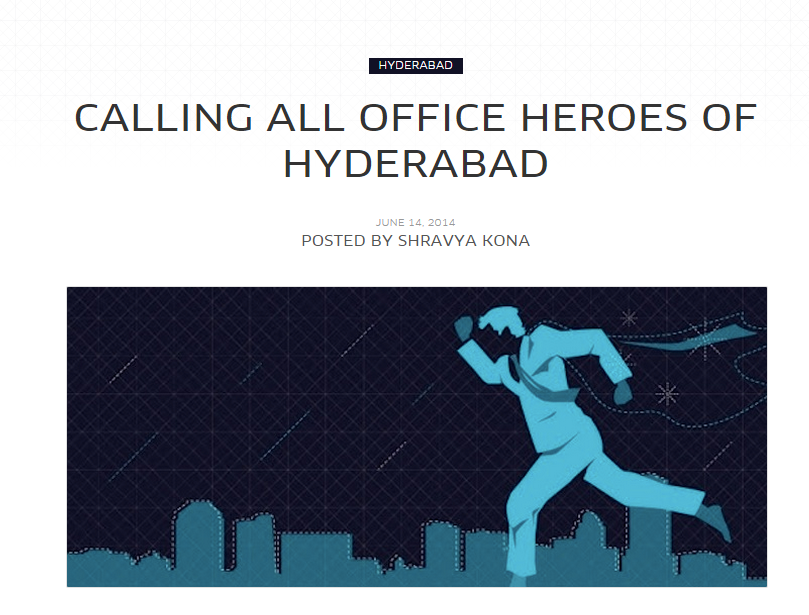
For every colleague you refer, Uber promised credits worth Rs.600 and Rs.10,000 who referred the most
Phase 3 : Amplification
Phase 3 : Amplification
Heavy Discounts, Festival Marketing & Product Development
With their referral marketing in full flow, Uber decided to go full throttle and amplify their launch with product development by launching new cars, building their coverage, expanding in other cities and the gift of choice from a hatchback to a sedan to luxury and finally even an auto rickshaw.
They decided to become ‘available’ for consumers when most needed which meant,
- Uber delivered kites on Makar Sakranti, colors on Holi and cupcakes on Rakhi.
- Uber even offered discounted rides to your IPL matches and other key events.
- Uber also offered to give mums a Mother’s day makeover or lovers a ride in an Uber Chopper on Valentines Day.
Now, festival marketing is not new at all, but for a new entrant global cab service company to appeal to consumers in the local context makes for a brilliant strategic move. The trick lies in being able to do this subtly, something that most brands fail at.
Phase 4 : Sustenance
Phase 4 : Sustenance
Strategic partnerships
After all the right hooks and levers were pulled and things were moving north, you need to keep doing a little something to stay there. Now this was the key and the most impressive part of Uber’s strategy. The partnerships with other popular products and services that Uber cracked were not only intelligent but also path breaking in the start-up ecosystem.
Have a look at some of the really cool strategic partnerships that Uber cracked which helped its course
Tie up with Zomato
The option of booking an Uber from the Zomato app to reach one’s favorite restaurant. Contextual and brilliant integration.
Tie up with Paytm
After they ran in trouble with the RBI regulatory authorities for flouting the 2 step verification rule for credit and debit card payments as well as using an US payment gateway – they had to integrate their payment system through PayTM wallet which in retrospect turned out to be a good move considering PayTM is now boasting of 10 million downloads on Google Playstore alone.
Tie up with BookMyShow
Uber tied up with BookMyShow as official logistics partner during the ongoing T20 Cricket season. Again, this proved to be extremely contextual.
Tie up with Mini Cooper
Uber partnered with Mini Cooper to give their users a 15 minute ride using their app, completely free. Got you interested, want to download the Uber App just for this? Then use the code UberMINI14 to get Rs. 500 off on your first ride. Brilliant hook, yet another superb tie-up.
These are just a few examples which we found interesting. For more visit their blog.
Phase 5 : Growth
Phase 5 : Growth
For Growth, you need to keep doing things right consistently because memories are fragile and brands are replaceable.
Here are a few things that Uber is doing well to keep up its growth chart and make further inroads into the 48,000 crore taxi market in India.
Uber is being local
Uber is trying to catch the pulse and characteristics of every city. In my last post I stressed on how brands need to be more human for the consumers to connect. Uber is doing just that by catering to consumers city wise, respecting the diversity that exists even between consumers in India.
When I say Uber is being local I mean
- Uber gives discounts for everyone travelling to the Mumbai Business Week
- They give luxury cars for free for everyone attending the Vibrant Gujarat Summit in Ahmedabad
- They announce free pick up and drop service to the Chinnaswamy Stadium in Bangalore
- They celebrate Chandigarh’s 48th Birthday and give a 48% discount on the same
- They celebrate Indian festivals by delivering kites, gujjiyas, colors and dhol on request
Uber is being safe and social
Uber did receive a major setback and backlash after the Delhi incident but they have tried very hard to come right back. Ample communication has been sent out telling people that Uber is completely safe now including issuing multiple apology letters for their debacle.
Uber is being social like every other brand now. They realize it is important to feel for issues that affect the consumers and be by their side in times of distress. They realize that standing up for a noble cause is perhaps just as important as providing good discounts.
Final Words
Final Words
What do we know? What have we learnt?
- In all of this, we have not seen Uber using any mass marketing methods like TV, Print, OOH or Radio. Forget ATL, not even any promoted post and tweets on Facebook & Twitter.
- Their primary means of communication with the consumer still remains SMS and Email which seem to be working fine for the time being.
- Uber has invested a lot on their blog to document their efforts
- They are truly moving from 4Ps of Marketing to 3Cs.
Consistent, Contextual and Capability.
*All images have been sourced from Uber’s official blog

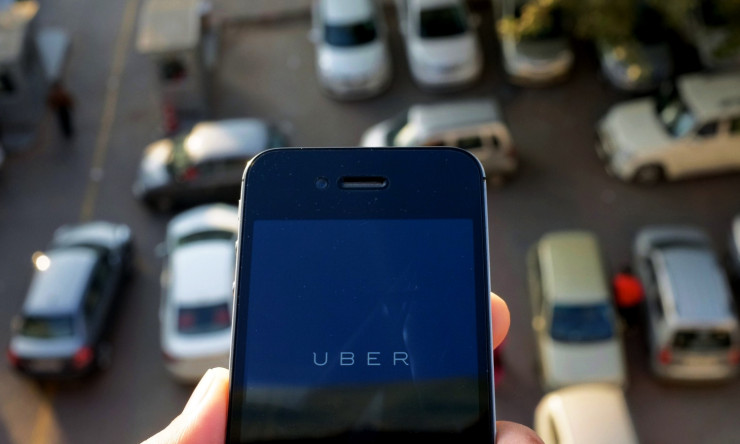
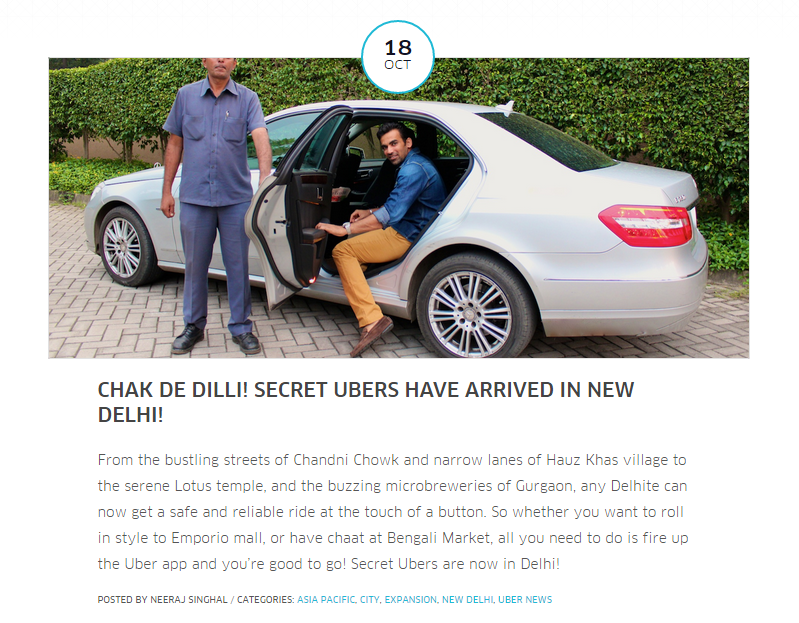

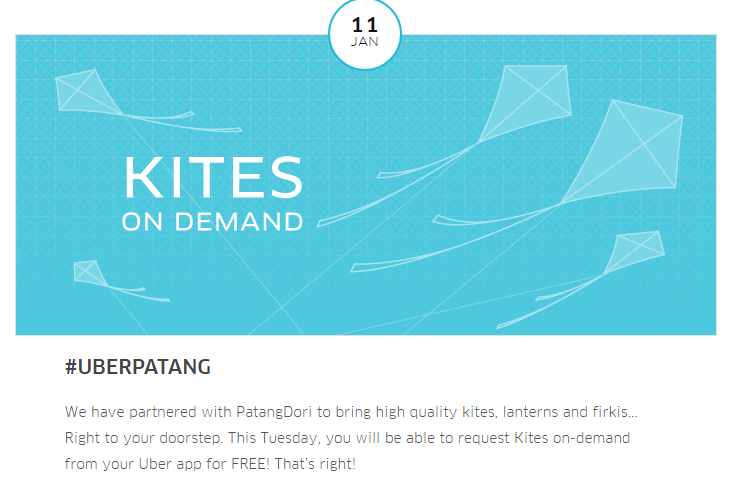

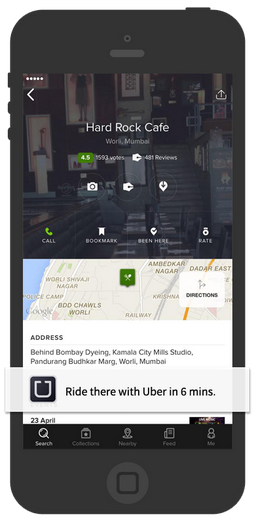
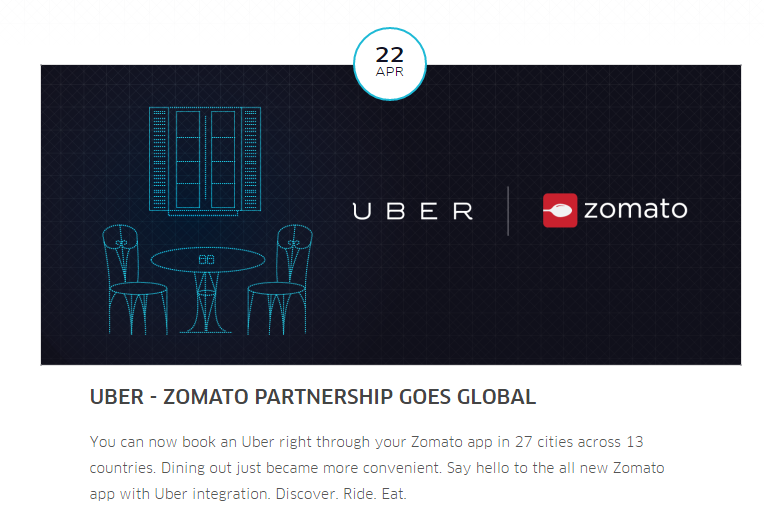
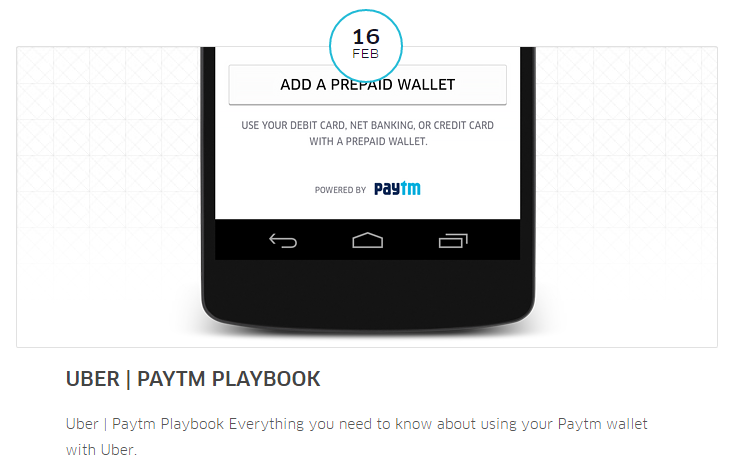
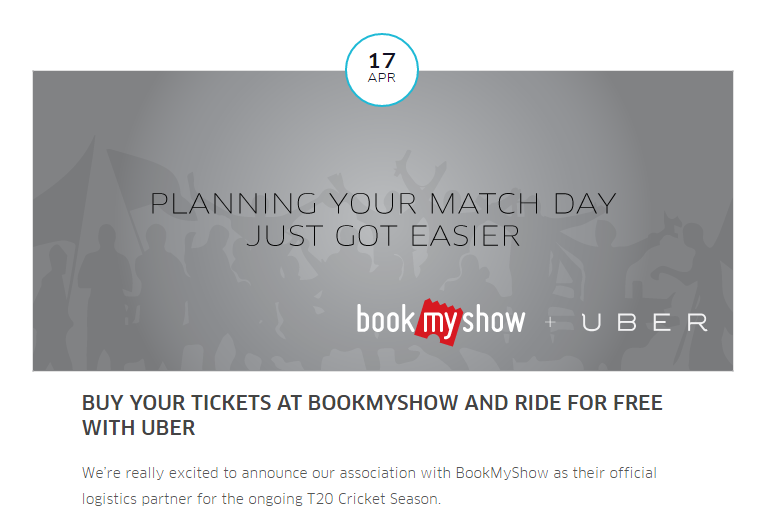
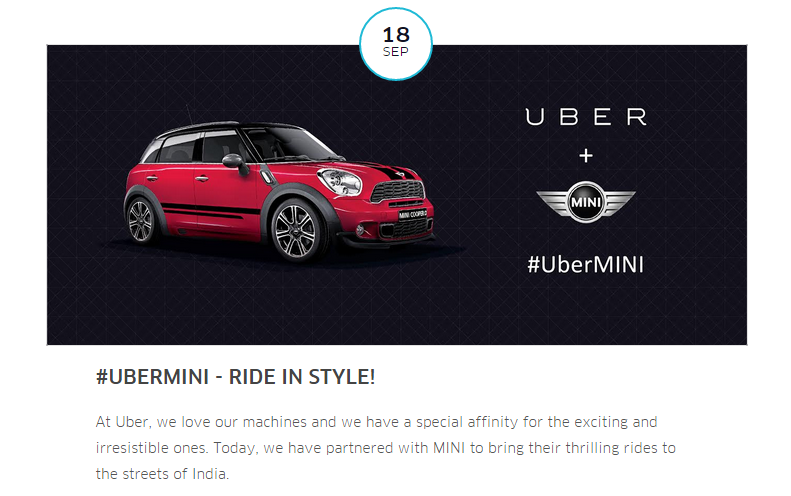
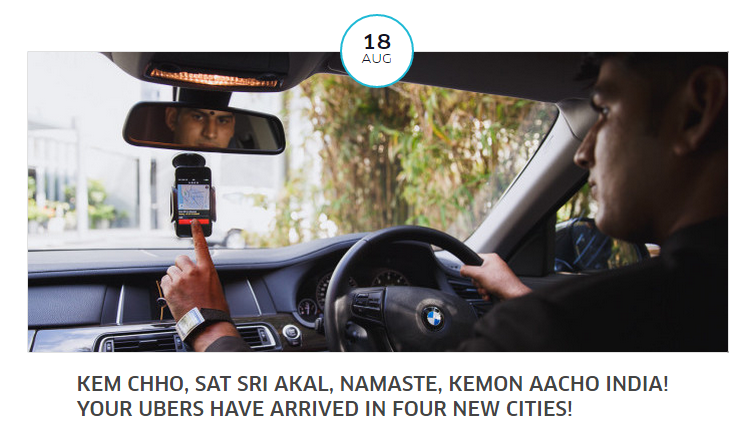
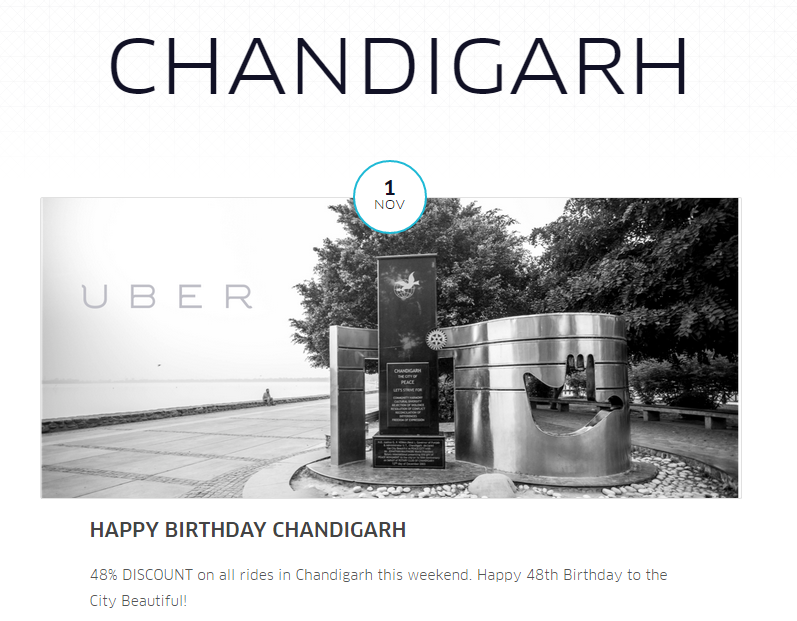
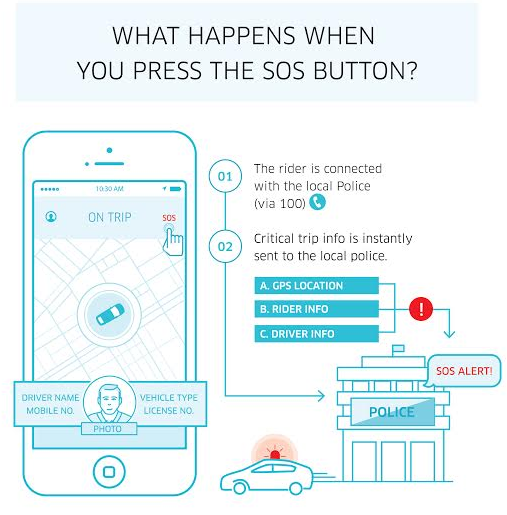

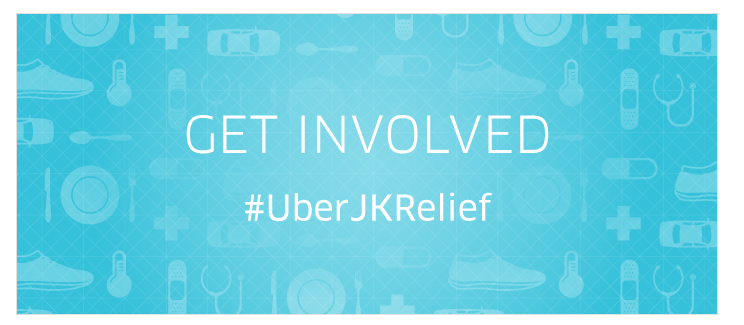


May 12, 2015
Interesting. They definitely proved action will speak louder than unnecessary noise.
May 13, 2015
Damn right 🙂 Thanks for reading
May 13, 2015
Brilliant article! Good strategies by UBER – Simplicity, attention to detail and good product is the right combination for being successful.
May 13, 2015
Hey Ruchi,
Thank you so much 🙂 Yes, the strategies are really unique. And talking about simplicity in communication you should also try and keep track of communication from Indigo Airlines. Its similar.
Keep coming back to Hook, Line & Clincher.
Regards,
Prateek Malpani
May 14, 2015
Will surely do!
May 17, 2015
Exemplary article! Discovering and blending the dimensions of technology, culture and economy to outgrow the possibilities. This is just the beginning of “radiation era” fueled by brilliant innovative ideas exploiting the information reach available in present time.
May 22, 2015
Thank you so much. The Indian start up system combined with such dynamic and innovative marketing is on its way to outgrow all possibilities.
May 22, 2015
a very planned and systematic approach, Far better than Indian startups which burn investors money in unnecessary marketing and re-branding even before establishing themselves. Housing.com lookup campaign is classic example of such attempt which failed. great analysis by the writer.Kudos.
May 22, 2015
Hi Ravi,
True, systematic and planned approach was the key in Uber’s launch and promotion till now. Indian startups are under a lot of pressure to show growth and promise to the VCs that have invested in them. Hence a lot of VC money gets used up in marketing, product and talent. I dont know if Housing.com’s lookup was a failure. They will have to do a brand track and campaign effectiveness research and club it with the increase in traffic and metrics to assess the ROI of the 120 crore marketing campaign. Sure, the communication could have been a little more direct considering they have just entered. Only time will tell how they take this ahead from here.
Thank you so much. Please keep reading and sharing.
Regards,
Prateek Malpani
May 28, 2015
Hi Prateek, Thanks for your reply on my comments. I am also not sure about the failure or success of the lookup campaign but i still strongly feel that there can be more effective ways than spending 120 Crores and painting the town with your brand. Uber approach was far better or may be they have hired the right agency and talent to do so.
I liked the way you research and write. Keep it up.
May 22, 2015
Fantastic analysis, a joy to read as always! Just curious about something: what is their user base like, not numbers but more in terms of diversity across society? They seem to rely a lot on modern technology (email,SMS,blog) rather than traditional methods, and I’m just wondering if they have been more successful because their target audience is tech-savvy anyway.
I guess what I am asking is: have they attempted to, or been able to break into the lesser-tech-savvy and lower income classes in India?
May 22, 2015
Hi Vishaal,
Thank you so much. Uber is very confidential on the numbers and revenue that they are clocking in India. I dont know the kind of audience that they are targeting because their marketing methods sure are concentrated more to a slightly evolved internet audience than usual. Even when Ola is expanding in tier 2 and tier 3 metros, Uber is still trying to increase user base in top 8 cities. Their communication also is far from being massy. I feel sooner or later with pressure from competition they will give in to using traditional marketing methods. For now I guess they are trying to create very strong brand evangelists and increase LTV of every user, retaining and trying to increase number of rides per user. They will try breaking into lesser tech savvy people soon but that’s the thing about great brands, rather than building a communication and product for the late bloomers which are the mass, good brand build it for the early adopters and the mass will aspire and evolve how you evolve for good.
Keep reading and sharing. Very encouraging to see comments and discussions like these on the blog 🙂
Regards,
Prateek Malpani
June 16, 2016
Hi Prateek,
Do you think eventually Uber would have to resort to more traditional marketing techniques to expand their user base. I guess they may never resort to ATL channels because of the expense and questionable ROI but potentially look at expanding their spend on BTL channels. After a point, I feel their marketing keeps hitting the same TG.
Aditya
June 16, 2016
Hi Aditya,
Absolutely correct! I very strongly feel that Uber will resort to more traditional marketing techniques to expand user base. In fact they have already started with OOH and small print ads. However, as far as I can gather, Uber is looking at market domination rather than market expansion. Exactly the reason why Ola is present in 100+ cities while Uber in just 20 odd. Therefore it becomes difficult for them to resort to a PAN India mass marketing campaigns. When I had written this post, more than a year ago, the approach looked unique, now, I do agree with you that the marketing keeps hitting the same TG.
December 7, 2015
Great strategy opted by Uber. Other competitors need to learn a lot. Surviving in Indian market is biggest task. Uber has almost crossed the hurdles.
And a excellent article covered all details and easy to understand.
Thanks & Regards
Vivek
December 8, 2015
Being most expensive startup on the planet, Uber certainly has created brouhaha with its zippy strategy and well-oiled m-application. Not only it has created millions of jobs in the country but also brought a paradigm shift in the transport sector. Uber too faces competition like in any other industry, but its lissome app and global presence attracts well-heeled and well-informed riders than its counterparts.
Mushrooming of smartphones brought such models into existence and innovation seems to be a new way of change.
Above article aptly describes the making of Uber in India. Loved reading it!!
Thanks & Regards
Anoop
May 7, 2016
Whose handling branding for Uber In India? Do we have a name or a company or something?
May 9, 2016
Hi Antariksh,
As far as I know, Uber has city marketing managers who are responsible for that city’s marketing initiatives, tie-ups and more. Over and above this the brand guidelines must be coming from the headquarters and there would be a central marketing team taking care of national deals and overall mass communication.